Worldcoin Project (The Hindu)

- 31 Jul 2023
Why in the News?
In a recent announcement, the CEO of OpenAI officially reintroduced his Worldcoin project, which had previously taken a backseat to the widespread popularity of ChatGPT.
What is Worldcoin Project?
- The Worldcoin Project aims to establish a digital network that enables everyone to participate and claim some form of stake in the digital economy.
- The project operates on a straightforward model:
- Individuals can prove their uniqueness as humans by allowing their eyes to be scanned, and in return, they receive a cryptocurrency reward and an identification called a "World ID."
- Worldcoin relies on a device called "Orb," which is used by volunteers known as "Orb operators."
- These operators scan a person's iris pattern to collect their biometric data and facilitate the issuance of a World ID through the World app.
- Participants who have been scanned can use the World app to receive the Worldcoin cryptocurrency at regular intervals or engage in transactions using their World ID wherever applicable.
- This process, known as "proof of personhood," ensures that individuals cannot register multiple times to gain more crypto rewards.
Voyager 2 Spacecraft (HT)
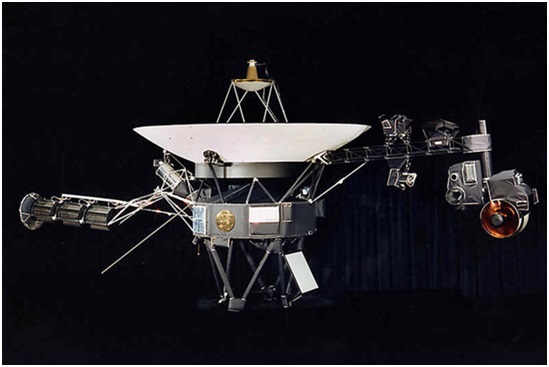
- 31 Jul 2023
Why in the News?
NASA’'s Voyager 2 spacecraft, which is venturing through space between stars, faces communication problems due to antenna misalignment. .
About Voyager 2 Spacecraft:
- Voyager 2 is an iconic interplanetary spacecraft launched by NASA on August 20, 1977, with the primary objective of exploring the outer planets of our solar system.
- It is part of the Voyager program, and along with its twin, Voyager 1, it has provided invaluable insights into the distant regions of our cosmic neighborhood.
- The spacecraft is equipped with a suite of scientific instruments to study various aspects of the planets it encounters, including their atmospheres, magnetic fields, and planetary surfaces.
- Voyager 2 successfully conducted close flybys of Jupiter in 1979, Saturn in 1981, Uranus in 1986, and Neptune in 1989, becoming the first and only spacecraft to visit these four giant gas planets.
- Beyond its initial mission, Voyager 2 continues to be operational and remains in communication with Earth, traveling at an impressive speed of approximately 34,000 miles per hour (55,000 kilometers per hour).
- It has since left the heliosphere, the region influenced by the Sun's magnetic field, and entered interstellar space, becoming the second human-made object to do so after Voyager 1.
- Throughout its journey, Voyager 2 has provided a wealth of data and discoveries about the outer planets and their moons, as well as valuable information about the space environment outside the solar system.
- It has captured breathtaking images of planetary systems, revealing the beauty and complexity of the outer planets and their fascinating moons.
- The spacecraft continues to be a remarkable testament to human ingenuity and curiosity as it ventures farther into the cosmos, providing us with an enduring legacy of exploration and knowledge about our celestial neighbors.
GOBARdhan Initiative (PIB)
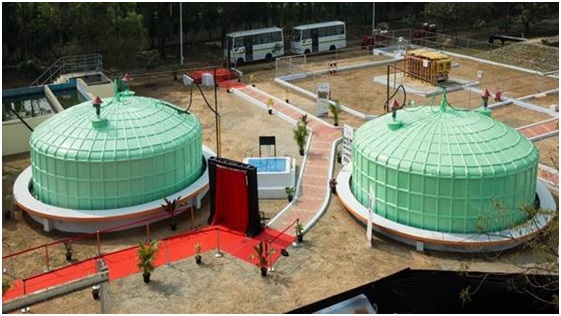
- 31 Jul 2023
Why in the News?
Recently, Union Minister for Jal Shakti has launched the Unified Registration Portal for GOBARdhan.
About GOBARdhan Initiative:
- GOBARdhan (Galvanizing Organic Bio-Agro Resources Dhan) initiative was launched in 2018.
- Aim:
- The primary goal of the initiative is to convert waste to wealth by promoting a circular economy.
- Nodal Ministry:
- The GOBARdhan Initiative is under the Department of Drinking Water and Sanitation, Ministry of Jal Shakti.
- Gobardhan is an integral part of Swachh Bharat Mission (Gramin) Phase II, focusing on Solid Waste Management.
- Objectives:
- To assist villages in safely managing their cattle and agricultural waste, leading to cleaner villages.
- To help communities convert cattle and organic waste into wealth using treatment systems.
- To transform organic waste, especially cattle waste, into biogas and organic manure for utilization in rural areas.
- To promote environmental sanitation and control vector-borne diseases by effectively disposing of waste in rural regions.
- To create employment and income-generation opportunities in rural areas by involving entrepreneurs, Self-Help Groups (SHGs), and youth groups in setting up, operating, and managing GOBARdhan units.
- Financial Incentive:
- The Government of India provides technical assistance and financial support of up to 50 lakhs for each district to achieve the safe disposal of cattle and organic waste as part of the initiative.
ULLAS Initiative (PIB)

- 31 Jul 2023
Why in the News?
In New Delhi, the logo, slogan "Jan Jan Sakshar," and mobile application of ULLAS were recently unveiled by Shri Dharmendra Pradhan, the Union Minister of Education and Minister of Skill Development and Entrepreneurship.
About the ULLAS Initiative:
- The ULLAS (Understanding Lifelong Learning for All in Society) initiative, holds the potential to revolutionize education and literacy nationwide.
- Its primary objective is to create a learning ecosystem that reaches every individual, bridging the gaps in basic literacy and essential life skills.
- Targeting citizens aged 15 and above who missed the opportunity to attend formal schooling, the initiative imparts basic education, digital and financial literacy, and critical life skills.
- Implementation is driven by volunteerism, emphasizing community participation.
- The slogan of the initiative is "ULLAS: Nav Bharat Saksharta Karyakram."
- To support its goals, the ULLAS app was launched, designed with user-friendliness and interactivity in mind.
- Available on both Android and iOS platforms, the app serves as a digital gateway for learners to access a diverse range of learning resources through the DIKSHA portal of NCERT.
- The ULLAS app facilitates the registration of learners and volunteers, either through self-registration or with the assistance of surveyors.
- Significance:
- This app plays a crucial role in promoting functional literacy, vocational skills, and vital life skills such as financial literacy, legal literacy, digital literacy, and empowering citizens to actively participate in nation-building efforts.
- Furthermore, the ULLAS Initiative nurtures a culture of continuous learning and knowledge-sharing within communities across India, fostering a brighter future for the nation.
Parkachik Glacier (Indian Express)
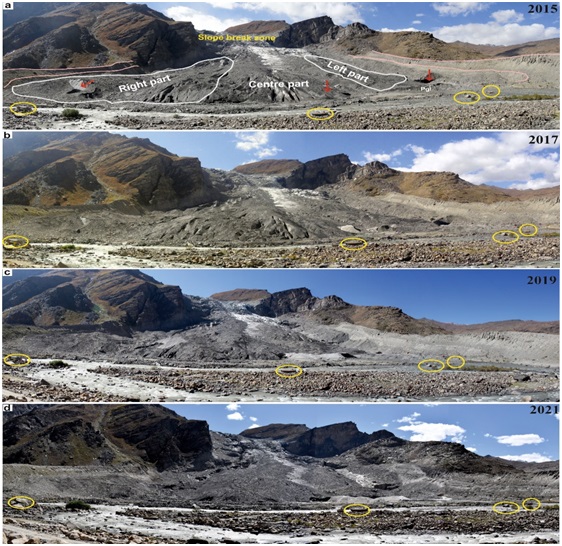
- 31 Jul 2023
Why in the News?
According to a recent study by scientists from the Wadia Institute of Himalayan Geology, the rapid ice melt of the Parkachik Glacier in Ladakh is anticipated to lead to the formation of three glacial lakes.
Regarding the Parkachik Glacier:
- The Parkachik Glacier, stretching 14 km in length and covering approximately 53 square km, stands as one of the largest glaciers in the Suru River valley.
- This valley is situated within the southern Zanskar Ranges of the western Himalayas.
- The glacier's accelerated melting can be attributed to two primary factors.
- Firstly, the effects of global warming and rising temperatures in the area contribute to this phenomenon.
- Secondly, its lower altitude compared to other glaciers in the Zanskar region also plays a significant role in the rapid melting process.
- Also, its relatively lower altitude compared to other glaciers in the Zanskar region contributes to its vulnerability to melting.
Important details about the Zanskar Ranges:
- Location:
- Zanskar is a high-altitude semi-desert situated on the Northern flank of the Great Himalayan Range.
- Climatic Influence:
- The Zanskar Ranges serve as a climatic barrier, shielding Ladakh and Zanskar from much of the monsoon weather. Consequently, the region experiences a pleasantly warm and dry climate during the summer months.
- Flora:
- The lower reaches of Zanskar's valleys harbor most of its vegetation, primarily consisting of alpine and tundra species.
- Fauna:
- Zanskar is home to diverse wildlife, including marmots, bears, wolves, snow leopards, kiangs (Tibetan wild asses), bharals (Himalayan blue sheep), alpine Ibex, wild sheep and goats, and the impressive lammergeier, also known as the bearded vulture.
National Coal Index (AIR)
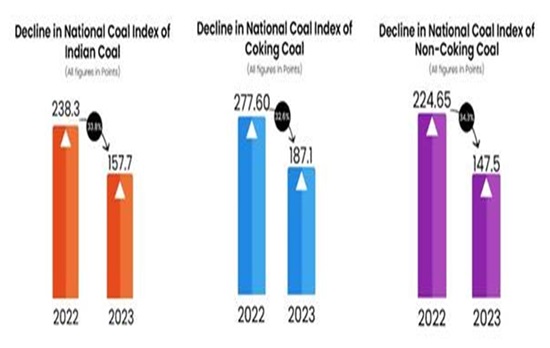
- 27 Jul 2023
Why in the News?
The National Coal Index (NCI) has shown a significant decline of 33.8 per cent in May this year at 157.7 points compared to May last when it was at 238.3 points. It indicates a strong supply of coal in the market, with sufficient availability to meet the growing demands.
About National Coal Index:
- Launch Date:
- The National Coal Index was introduced in the year 2020.
- Ministry:
- Developed under the purview of the Ministry of Coal, India.
- The esteemed Indian Statistical Institute, Kolkata, played a key role in creating the index as part of India's transition away from coal.
- Price Index:
- It serves as a price index, reflecting changes in the price level of coal during a specific month relative to the fixed base year.
- Objective:
- The primary objective of the National Coal Index is to offer an accurate reflection of the market price of coal.
- Base Year:
- The base year for the index is 2017-18.
- Inclusive Prices:
- The price index amalgamates coal prices from various sales channels, including Notified Prices, Auction Prices, and Import Prices.
- The National Coal Index combines coal prices from all sales channels, including notified prices, auction prices and import prices.
- It serves as a reliable indicator of market dynamics, providing valuable insights into coal price fluctuations.
- The National Coal Index (NCI) has shown a significant decline of 33.8% in May 2023 compared to May 2022, which suggests significant reduction in coal prices.
- This indicates a strong supply of coal in the market, with sufficient availability to meet the growing demands.
Resource Efficiency and Circular Economy Industry Coalition (RECEIC) (Indian Express)
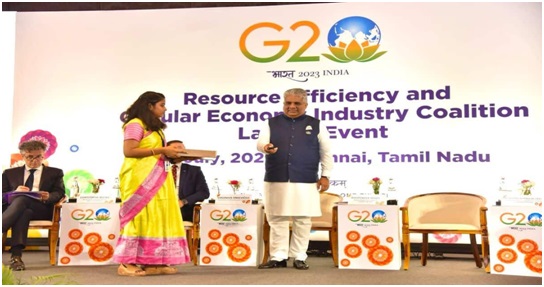
- 27 Jul 2023
Why in the News?
Union Environment, Forest and Climate Change Minister Bhupender Yadav on Thursday launched a Resource Efficiency Circular Economy Industry Coalition (RECEIC), conceptualised under India’s G20 Presidency, to promote the practices of resource efficiency and circular economy globally.
About Resource Efficiency and Circular Economy Industry Coalition (RECEIC):
- RECEIC was launched in 2023 at Chennai, Tamil Nadu, with the honorable presence of Shri Bhupender Yadav, Minister for Environment, Forest, and Climate Change.
- The launch event witnessed the participation of distinguished guests, including the Commissioner on Environment from the European Union and esteemed Ministers from Canada, France, Italy, Denmark, Mauritius, and the United Arab Emirates.
- Industry-Driven Initiative:
- RECEIC is an industry-led initiative with a primary goal of fostering global resource efficiency and circular economy practices.
- Embracing the circular economy model, RECEIC promotes production and consumption practices involving sharing, leasing, reusing, repairing, refurbishing, and recycling materials and products to maximize their utility.
- Sustainable Impact:
- The coalition is envisioned to be a self-sustaining entity, committed to lasting environmental sustainability, beyond India's G20 Presidency.
- Founding Members:
- With 39 companies headquartered in 11 different countries, the coalition boasts a diverse group of founding members.
- As a collaborative platform, RECEIC fosters knowledge-sharing, best practice exchange, and the adoption of sustainable approaches among participating industries.
Millipede species (India Today)
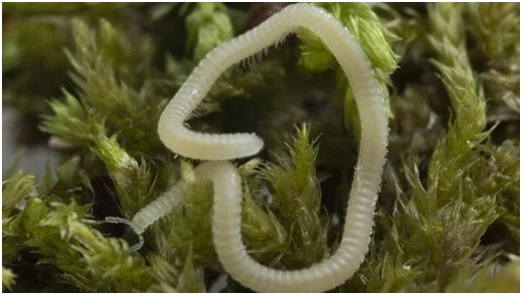
- 27 Jul 2023
Why in the News?
In a recent discovery, a previously unknown species of millipede was found dwelling beneath the city of Los Angeles, United States.
About Millipede Species:
- The recently discovered species belongs to the category of thread Millipedes.
- It measures approximately the length of a paperclip but is as slim as pencil lead.
- Scientifically identified as Illacme socal, this millipede is translucent and displays sinuous movements akin to a jellyfish tentacle.
- The creature's habitat lies about four inches beneath the ground, where it burrows and secretes distinctive chemicals, exhibiting unique behavior.
- Remarkably, this millipede is blind and relies on hornlike antennas extending from its head to navigate its surroundings.
What are Millipedes?
- Millipedes belong to the arthropod class Diplopoda, placing them in the same group as centipedes.
- These invertebrates exhibit a cylindrical or slightly flattened body structure.
- Despite their name, "millipede," which translates to "a thousand feet," these creatures do not actually have a thousand feet. However, they possess numerous legs on their bodies.
- The millipede's body is segmented, and each segment carries two sets of legs attached to the underside.
- Diet-wise, millipedes are detritivores, subsisting on dead organic matter found in the earth, such as damp wood pieces, decaying leaves, and other materials that are naturally present in their moist underground habitat.
Rare ‘Ureilite’ Meteorite (Weather Channel)

- 27 Jul 2023
Why in the News?
Recently, a team of scientists from Allahabad University and the University of Bern, Switzerland, made an intriguing discovery. They unveiled that the Dhala crater was formed by the impact of an exceedingly uncommon and ancient meteorite called Ureilite.
Key Facts About Ureilite:
- Ureilite is an extraordinary type of meteorite, characterized by its rarity, making up only a minuscule portion of the meteorites found on Earth.
- The name "Ureilite" originates from the location of its first discovery, the Novo Urei village in Russia.
- Composition:
- Ureilites are primarily composed of silicate rock, with olivine and pyroxene being the dominant minerals.
- They also contain a smaller fraction of carbon, which can be in the form of either diamond or graphite, along with metal sulphides and a few fine-grained silicates.
- Elongated cavities are commonly found, typically oriented in the same direction.
- Lack of Chondrules:
- Unlike many other stony meteorites, ureilites do not contain chondrules, which are small, spherical grains that formed in the early solar system.
- Primitive Nature:
- Ureilites are regarded as primitive meteorites because their composition closely resembles the material from which the solar system originated.
- Their unique characteristics offer valuable insights into the early stages of our cosmic environment.
About Dhala Crater:
- Dhala Crater holds significance as India's oldest and largest impact crater, with an estimated formation age of approximately 2500 million years.
- Named after the village Dhala, it remains an eroded remnant of the original impact structure.
- Situated in the Shivpuri district of Madhya Pradesh, the crater boasts an impressive size, spanning a massive 11 km in diameter, making it the largest impact crater in Asia.
Urea Gold (ET)

- 27 Jul 2023
Why in the News?
During a recent event held in Rajasthan's Sikar, the Prime Minister unveiled "Urea Gold," a novel type of Urea fertilizer.
About Urea Gold:
- Urea Gold is an advanced variety of Urea that features a Sulphur coating.
- Its primary purpose is to address soil Sulphur deficiency while also offering cost-saving benefits to farmers.
- In comparison to the existing Neem-coated urea, Urea Gold stands out due to its superior economic viability and efficiency.
- The gradual release of nitrogen facilitated by its Sulphur coating enhances crop uptake, and the inclusion of humic acid extends its fertilizing lifespan.
- Notably, Urea Gold not only acts as a substitute for traditional urea but also contributes to a reduction in overall fertilizer usage.
- According to a report, using 15 kg of Urea Gold can provide comparable benefits to 20 kg of conventional urea, making it a more efficient and effective choice for farmers.
INDIAai (ET)

- 26 Jul 2023
Why in the News?
In a recent development, INDIAai and Meta India entered into a memorandum of understanding (MoU) to create a collaborative framework for cooperation and partnership in the realm of artificial intelligence (AI) and emerging technologies.
About INDIAai:
- INDIAai, the National artificial intelligence Portal of India, was launched on 28th May 2020 as a comprehensive platform.
- It serves as a knowledge portal, research organization, and ecosystem-building initiative.
- Its primary aim is to foster unity and encourage collaborations within India's AI ecosystem by bringing together various entities.
- This joint initiative is supported by the Ministry of Electronics and IT (MeitY), the National e-Governance Division (NeGD), and NASSCOM.
- NeGD, established in 2009 under the Digital India Corporation (a not-for-profit company set up by MeitY), plays a crucial role in this venture.
- NASSCOM, a prominent not-for-profit industry association, serves as the apex body for India's IT and IT-enabled products and services sector.
- INDIAai functions as the central knowledge hub for artificial intelligence and related fields, catering to aspiring entrepreneurs, students, professionals, academics, and all other stakeholders in the domain.
What is Artificial intelligence (AI)?
- Artificial Intelligence (AI) is a branch of computer science: It involves the development of intelligent machines that can perform tasks typically requiring human intelligence.
- Machine Learning and Algorithms: AI systems utilize machine learning algorithms to process vast amounts of data, learn from it, and improve their performance over time without explicit programming.
- Applications in various fields: AI finds applications in diverse domains, including natural language processing, image recognition, robotics, healthcare, finance, and autonomous vehicles, among others. Its goal is to mimic human cognitive abilities, such as problem-solving, reasoning, and decision-making.
Hike in US Federal Reserve Interest and Impact on Indian Economy (Live Mint)
- 26 Jul 2023
Why in the News?
The US Federal Reserve is expected to raise benchmark rates by 25 bps to the 5.25-5.50 percent range on Wednesday. Investors will be watching for cues on inflation and rate hike trajectory.
About US Federal Reserve:
- The US Federal Reserve, also known as the Fed, serves as the central banking system of the United States, offering a secure, adaptable, and steady monetary and financial framework.
- It operates through 12 regional Federal Reserve Banks, each responsible for a designated U.S. geographic area.
- The Fed's primary functions encompass conducting national monetary policy, overseeing and regulating banks, ensuring financial stability, and delivering banking services.
Impacts of US Federal Reserve Interest Hike:
- The US Fed's Significance: As the world's most powerful central bank, the decisions taken by the US Federal Reserve regarding interest rates have significant implications worldwide. These decisions influence both developed and emerging economies across the globe.
- Global Effects: Changes in US interest rates have a ripple effect that extends beyond the nation's borders. The adjustments impact various economies worldwide, leading to shifts in investment patterns and financial flows.
- Appeal of American Assets: When the Federal Reserve raises interest rates, American assets become more attractive to investors seeking higher returns. Consequently, there is a possibility of capital outflows from emerging and riskier markets to the US.
- Impact on Capital-Intensive Sectors: Sectors heavily reliant on Foreign Direct Investments (FDIs) are particularly vulnerable to the consequences of a US interest rate hike. The increased cost of borrowing may affect their growth prospects.
- Global Liquidity Tightening: Higher US interest rates can lead to a tightening of global liquidity. Foreign investors may face challenges in obtaining affordable funds, which could have implications for their investment decisions and overall economic activities.
Potential Impacts on the Indian Economy:
- Interest Rate Differential: Following a rate hike by the US Federal Reserve, the gap between interest rates in the US and India narrows, adversely affecting currency trade and financial flows.
- Foreign Investor Response: With higher returns available in the US due to increased interest rates and attractive Dollar and US Treasury yields, foreign investors may be inclined to withdraw investments from the Indian market, leading to capital outflows.
- Currency and RBI Response: The relative strengthening of the US currency (Dollar) makes the Indian rupee weaker, prompting the Reserve Bank of India (RBI) to consider a rate hike domestically.
- RBI's Action to Curb Outflows: To mitigate the outflows of funds from Foreign Institutional Investors (FIIs) and safeguard the rupee's stability, the RBI may find it necessary to increase interest rates within India.
- Forex Reserve Management: In the event of a significant decline in the rupee's value, the RBI might be compelled to sell some of its Dollar reserves to support the domestic currency. This action, however, depletes the country's foreign exchange reserves.
Conjunctivitis (India Today)

- 26 Jul 2023
Why in the News?
India has been witnessing a sharp increase in eye infections, specifically conjunctivitis. Amid heavy rainfall, Delhi and nearby areas have reported multiple cases of conjunctivitis.
About Conjunctivitis:
Conjunctivitis, commonly known as "pink eye," is an inflammation or infection of the conjunctiva, which is the thin, clear tissue that covers the white part of the eye and lines the inner surface of the eyelids. It can affect one or both eyes and is a highly contagious condition.
Causes of Conjunctivitis:
- Bacterial Infection: Bacteria, such as Staphylococcus aureus or Streptococcus pneumoniae, can cause bacterial conjunctivitis.
- Viral Infection: Viruses, including adenoviruses, can lead to viral conjunctivitis. This form of conjunctivitis is highly contagious and is often associated with colds or respiratory infections.
- Allergies: Allergic conjunctivitis occurs due to an allergic reaction to substances like pollen, pet dander, dust mites, or certain medications.
- Irritants: Exposure to irritants like smoke, chemicals, or foreign objects in the eye can cause irritant conjunctivitis.
Symptoms of Conjunctivitis:
- Redness of the eyes
- Watery or thick, yellowish discharge from the eyes
- Itchiness or burning sensation in the eyes
- Sensitivity to light
- Crusty eyelids or lashes, especially in the morning (more common in bacterial conjunctivitis)
- Swelling of the conjunctiva
- Blurred vision
Treatment:
- The treatment of conjunctivitis depends on its underlying cause:
- Bacterial conjunctivitis: Antibiotic eye drops or ointments are commonly prescribed to treat bacterial infections.
- Viral conjunctivitis: Since it is caused by a virus, antibiotics won't work. The symptoms are often relieved with supportive measures like artificial tears, cold compresses, and good hygiene practices to prevent spreading.
- Allergic conjunctivitis: Avoiding allergens is essential. Antihistamine eye drops or oral medications can help alleviate symptoms.
- Irritant conjunctivitis: Removing the irritant and using artificial tears can help soothe the eyes.
Prevention:
- To prevent the spread of conjunctivitis, one should follow these measures:
- Frequent handwashing.
- Avoid touching or rubbing the eyes.
- Avoid sharing towels, pillowcases, or eye makeup with an infected person.
- Avoid close contact with individuals showing symptoms of conjunctivitis.
Hematene (PIB)

- 26 Jul 2023
Why in the News?
A new and remarkably efficient optical limiter has been developed by researchers, utilizing a novel 2D material known as 'hematene.'
- About Hematene:
- Nanoflakes of a material called hematene extracted from iron ore have been found capable of withstanding and acting as a shield from high laser intensities.
- Hence it could be used to make devices called optical limiters that can protect sensitive optical equipment from light-induced damage.
- Radiation from laser sources is highly concentrated and powerful and can be detrimental to sensitive equipment such as sensors, detectors, and other optical devices.
- When the input intensity increases optical limiters control the amount of light that passes through, thereby preventing damage to the optical component.
- These devices are often useful in laser technologies, military, telecommunications, aircraft, and scientific research in several ways.
- The MESO (Materials for Energy Storage and Optoelectronic Devices) Group of the Department of Physics, Sanatana Dharma College, Alappuzha, in collaboration with the Ultrafast and Nonlinear Optics Lab of the Raman Research Institute, Bangalore, has come up with a new and highly efficient optical limiter using a novel 2D material, ‘hematene’.
- They found that 2D nanoflakes of hematene, a material extracted from iron ore or hematite are capable of withstanding very high laser intensities, and they exhibited excellent optical limiting of green laser light (532 nm) while maintaining a high linear transmission (about 87%) for low-intensity light.
- The nanoflakes of lateral dimensions less than 10 nm, prepared by applying ultrasonic waves to hematite in a liquid medium ( facile exfoliation process) for a definite period to exfoliate the 2D nanoflakes of hematene were also found to be highly stable after year-long storage under ambient conditions, indicating tremendous potential as an optical limiter for futuristic applications.
- This research work carried out at SD College using the instrumentation facility procured through the Fund for Improvement of S&T Infrastructure (FIST) programme of the Department of Science and Technology (DST) programme, was recently published in ACS Applied Optical Materials.
Maitree Super Thermal Power Project (STPP) (ET)

- 26 Jul 2023
Why in the News?
The synchronization of the 660-MW unit-2 of the 1,320-MW Maitree Super Thermal Power Project (STPP) with the electricity grid in Bangladesh was recently announced by the state-owned engineering firm Bharat Heavy Electricals.
- Location:
- It is situated in Rampal, in the Bagerhat district of Bangladesh's Khulna division.
- It will be one of the biggest coal-fired power plants in Bangladesh, along with the Payra Power Plant in Pataukhali, which commenced test production in January 2020.
- Capacity and Cost:
- The power station has a capacity of 1320 MW (2x660 MW) and is estimated to cost around $2 billion.
- Financing Plan:
- The project is being developed under India's tax concessions finance plan, aiming to enhance Bangladesh's national grid by an additional 1320 MW.
- Financed through a £1.3bn ($1.6bn) loan from the Export-Import (EXIM) Bank of India.
- Implementing Entity:
- India’s Bharat Heavy Electricals Limited (BHEL) is responsible for constructing the power plant on behalf of Bangladesh-India Friendship Electricity Company Private Limited (BIFPCL).
- Commercial Operation:
- The first unit of the super thermal power plant is expected to commence commercial operation in early October, representing a significant milestone in the growing cooperation between India and Bangladesh in the power industry.
- Future Expansion:
- In the subsequent year, the power plant's Unit-II, also known as the Rampal coal-fired power project, is scheduled for implementation.
STARFIRE Algorithm (PIB)
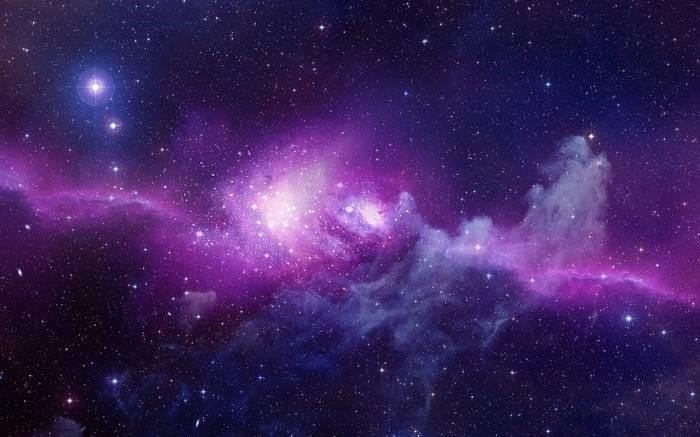
- 25 Jul 2023
Why in the News?
Researchers at Raman Research Institute (RRI) have recently successfully created an algorithm named STARFIRE.
Facts About STARFIRE Algorithm:
- The STARFIRE Algorithm, also referred to as the Simulation of TerrestriAl Radio Frequency Interference in oRbits around Earth (STARFIRE) algorithm, is designed for its specific application in modeling and analyzing terrestrial radio frequency interference within Earth's orbits.
- The model possesses several advantages, including its capability to estimate Radio Frequency Interference (RFI) emitted by various sources such as FM radio stations, Wi-Fi networks, mobile towers, radar, satellites, and communication devices.
This estimation aids in designing and fine-tuning antennas for optimal performance.
- The algorithm can effectively estimate and map unwanted RFI signals in space, providing valuable insights for enhancing data quality from future space-based Astronomy missions.
- By facilitating the design of instruments capable of operating optimally in the presence of RFI, the algorithm significantly enriches the data obtained from future space missions.
- Another noteworthy advantage of the STARFIRE Algorithm is its usefulness in orbit selection for upcoming missions, contributing to better planning and execution.
- To develop this model, scientists utilized data from FM transmitter stations in six countries worldwide, including Canada (8,443 stations), USA (28,072 stations), Japan (Tokyo - 21 stations), Australia (2,664 stations), Germany (2,500 stations), and South Africa (1,731 stations), making the model comprehensive and robust.
Biological Diversity Amendment Bill (The Hindu)
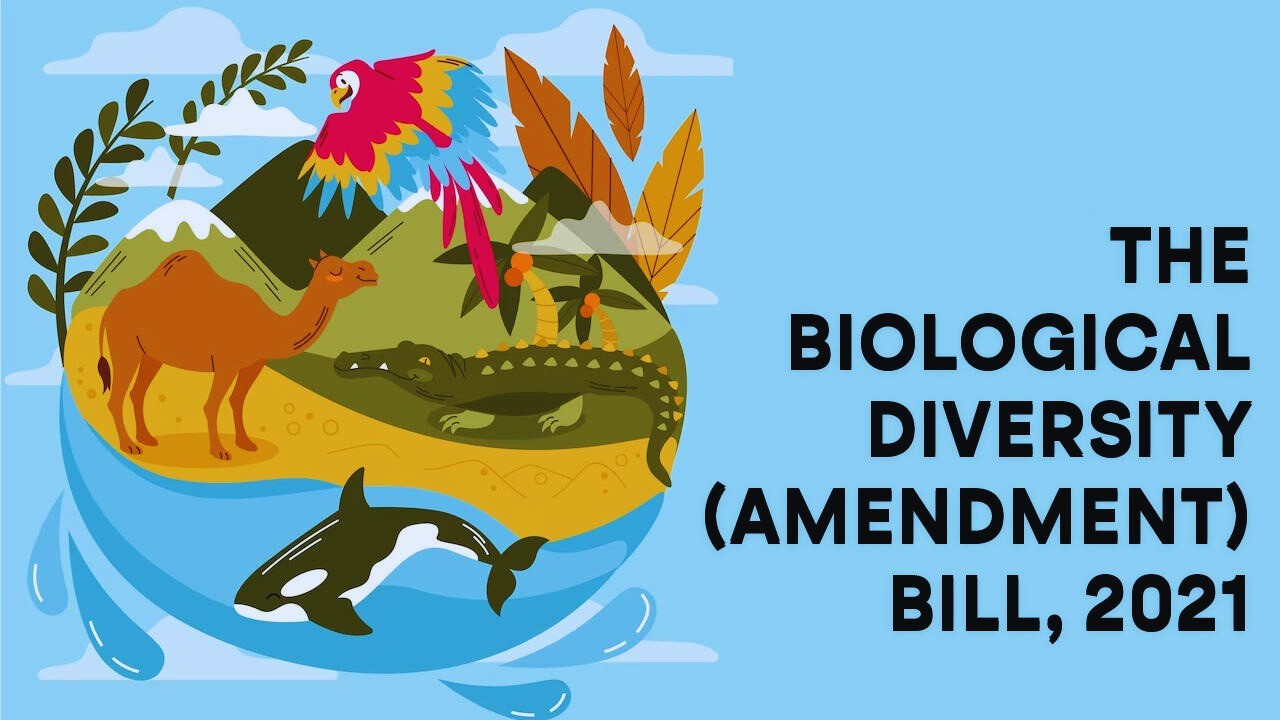
- 25 Jul 2023
Why in the News?
The Lok Sabha recently passed the Biological Diversity (Amendment) Bill, 2021, aimed at modifying the provisions of the Biological Diversity Act, 2002.
About Biological Diversity Act, 2002:
The act was enacted in 2002, it aims at the conservation of biological resources, managing its sustainable use and enabling fair and equitable sharing benefits arising out of the use and knowledge of biological resources with the local communities.
Regulatory Structure: The act envisaged a three-tier structure to regulate the access to biological resources:
- The National Biodiversity Authority (NBA) at the national level.
- State Biodiversity Boards(SBB) at the state level.
- Biodiversity Management Committees at the local body level.
- Under the Biological Diversity Act of 2002, provisions are made to share benefits with biodiversity conservers, holders, and creators of associated knowledge. These benefits encompass monetary compensation, sharing of Intellectual Property Rights (IPRs), and technology transfer.
Amendments Made in Biodiversity Bill 2021:
- Regarding Access to biological resources and associated knowledge, It amends the classification of entities, list of activities requiring intimation, and adds exemptions.
- Approval for Intellectual Property Rights (IPR) will be required before the grant of IPR instead of before the application itself.
- SBB will determine benefit sharing while granting approvals to domestic entities as per the regulations by NBA.
- The Bill decriminalises the offences and makes offences punishable with a penalty between one lakh rupees and Rs 50 lakh.
Significance of the Biological Diversity (Amendment) Bill 2021:
The Bill seeks to amend the 2002 Act to:
- Simplify compliance requirements for domestic companies.
- Encourage the Indian system of medicine and cultivation of wild medicinal plants,
- Facilitate fast-tracking of processes for research, patent application, and transfer of research results,
- Decriminalise offences, and
- Encourage foreign investment in the sector.
Asset Reconstruction Companies (ARCs) (LiveMint)

- 25 Jul 2023
Why in the News?
Taking advantage of the substantial number of written-off loans held by lenders and the government's recovery endeavors, ARCs are seizing the opportunity to acquire these loans.
About Asset Reconstruction Companies (ARCs):
- The Asset Reconstruction Company (ARC) functions as a distinct financial institution that acquires Non Performing Assets (NPAs) from banks and financial institutions, facilitating the process of cleansing their balance sheets.
- This enables banks to focus on their core banking activities. Instead of expending time and effort pursuing defaulters, banks can opt to sell the troubled assets to ARCs at a mutually agreed-upon value.
Legal Basis:
- The establishment of ARCs in India is supported by the Securitization and Reconstruction of Financial Assets and Enforcement of Security Interest (SARFAESI) Act, 2002.
- The SARFAESI Act streamlines the reconstruction of bad assets, avoiding the need for court intervention.
- Subsequently, numerous ARCs were established and registered with the Reserve Bank of India (RBI), which holds regulatory authority over these institutions.
Capital Needs for ARCs:
- Following the 2016 amendment to the SARFAESI Act, ARCs were mandated to possess a minimum Net Owned Fund of Rs. 2 crores. However, in 2017, the RBI increased this threshold to Rs. 100 crores.
- ARCs must maintain a Capital Adequacy Ratio (CAR) equivalent to 15% of their risk-weighted assets.
Krishnaraja Sagar (KRS) Dam (The Hindu)
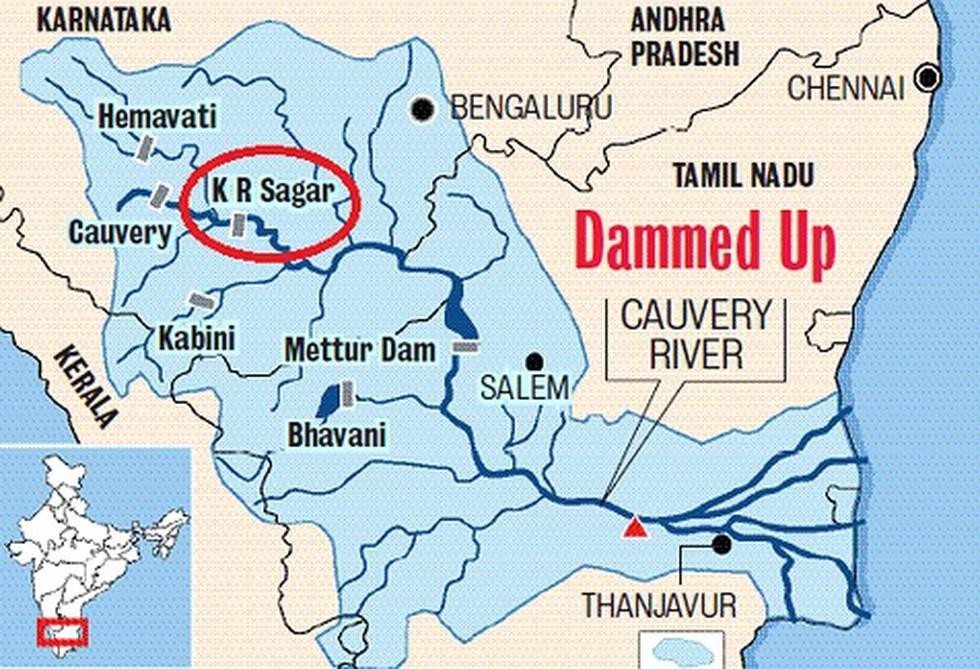
- 25 Jul 2023
Why in the News?
Due to heavy rainfall in the river's catchment area, the water level in the Krishnaraja Sagar (KRS) across the Cauvery recently surpassed the 100-ft mark, although its capacity reaches 124.80 feet.
About Krishnaraja Sagar (KRS) Dam:
- Situated in Karnataka's Mandya district, it lies beneath the merging point of the Kaveri river with its tributaries, Hemavati and Lakshmana Tirtha.
- It is a type of gravity dam.
- The dam is named for the then ruler of the Mysore Kingdom, Krishnaraja Wodeyar IV.
- The dam was designed by Sir M. Visvesvaraya, a famous Indian engineer.
- The reservoir is also the main source of drinking water for all of Mysore city and almost the whole of Bangalore.
- The water released from this dam is further used as an important source of water in the state of Tamil Nadu.
- An ornamental garden named “Brindavan Gardens” is attached to the dam.
Kaveri River:
- Kaveri or Cauvery is a sacred river of southern India. It is known as the Ganga of South India.
- It rises on Brahmagiri Hill of the Western Ghats in southwestern Karnataka state.
Drainage Basin:
- It flows in a southeasterly direction through the states of Karnataka and Tamil Nadu, and descends the Eastern Ghats in a series of great falls.
- Before emptying into the Bay of Bengal south of Cuddalore, Tamil Nadu, the river breaks into a large number of distributaries forming a wide delta called the “garden of southern India.”
Tributaries of Kaveri:
- Arkavathi, Hemavathi, Lakshmana Theertha, Shimsa, Kabini and Harangi.
National Commission for Protection of Child Rights (NCPCR) (Indian Express)

- 25 Jul 2023
Why in the News?
The National Commission for Protection of Child Rights (NCPCR) recently addressed the Manipur DGP, urging the filing of an FIR against three individuals.
About the National Commission for Protection of Child Rights (NCPCR):
- NCPCR is a statutory body set up in March 2007 under the Commissions for Protection of Child Rights (CPCR) Act, 2005.
- It is under the administrative control of the Ministry of Women & Child Development.
- The Commission's mandate is to ensure that all laws, policies, programmes, and administrative mechanisms are in consonance with the child rights perspective as enshrined in the Constitution of India and also the UN Convention on the Rights of the Child.
- It inquires into complaints relating to a child's right to free and compulsory education under the Right to Education Act, 2009.
- It monitors the implementation of Protection of Children from Sexual Offences (POCSO) Act, 2012.
Composition of NCPCR:
- This commission has a chairperson and six members of which at least two should be women.
- All of them are appointed by Central Government for three years.
- The maximum age to serve in commission is 65 years for Chairman and 60 years for members.
Functions and responsibilities of NCPCR:
- Examine and assess current safeguards for child rights and propose effective implementation strategies.
- Submit periodic reports to the central government on the efficacy of these safeguards.
- Conduct investigations into child rights violations and recommend legal action when appropriate.
- Raise awareness about child rights and available safeguards through diverse channels, such as publications, media, and seminars.
- Conduct inspections of institutions housing children, including juvenile homes, and suggest remedial measures if required.
- Investigate complaints and proactively address issues related to child rights deprivation, violation, and non-implementation of protective laws.
National Dental Commission Bill, 2023 (TIO)
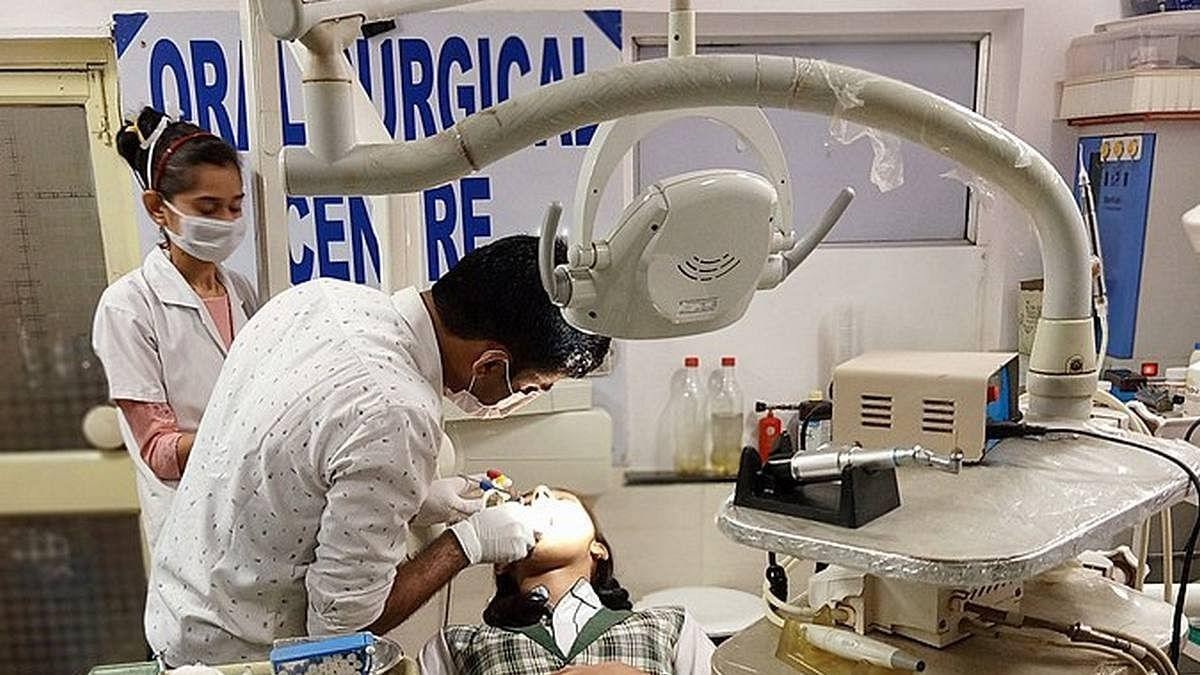
- 24 Jul 2023
Why in the News?
The Lok Sabha recently witnessed the introduction of the National Dental Commission Bill, 2023, by the government.
About National Dental Commission Bill, 2023:
- The primary objective of the Bill is to revoke the Dentists Act of 1948, ushering in new regulations and reforms.
- With a focus on affordability, the bill strives to enhance dental education accessibility and ensure quality oral healthcare services.
- In place of the existing Dental Council of India, the Bill proposes the establishment of the National Dental Commission (NDC) to oversee dental education and related matters effectively.
What is National Dental Commission (NDC)?
- The establishment of the new commission entails the formulation of policies and the maintenance of quality standards in dental education and the dental profession.
- A key responsibility of the commission will be to regulate fees for 50% of seats in private dental colleges.
Composition of NDC:
- The structure of the NDC will mirror that of the National Medical Commission (NMC), which replaced the Medical Council of India.
- The head office of the National Dental Commission will be located in New Delhi, consisting of a chairperson, eight ex officio members, and 24 part-time members and the appointment of members will be done by the central government.
- The Bill mandates that all members of the commission must declare their assets and liabilities upon entering and leaving office, along with disclosing any professional and commercial engagements they are involved in.
ISRO's PSLV-C56 (The Hindu)

- 24 Jul 2023
Why in the News?
ISRO recently declared that the launch of the PSLV-C56, carrying Singapore's DS-SAR satellite, is scheduled for July 30th.
Facts About PSLV-C56:
- From the Satish Dhawan Space Centre in Sriharikota, the PSLV-C56 is all set to embark on its mission, carrying the DS-SAR satellite and six additional co-passengers.
- Just like C55, the PSLV-C56 will be configured in its core-alone mode, ensuring a streamlined and efficient launch process.
- The primary objective of the mission is to deploy the DS-SAR satellite, weighing 360 kg, into a Near-equatorial Orbit (NEO) with a precise inclination of 5 degrees and an altitude of 535 km.
What is The DS-SAR satellite?
- The DS-SAR satellite is a collaborative effort between DSTA, representing the Government of Singapore, and ST Engineering.
- Its primary purpose is to cater to the satellite imagery needs of diverse governmental agencies within Singapore.
- ST Engineering intends to utilize the satellite for multi-modal and more responsive imagery and geospatial services, serving their commercial clientele effectively.
- The DS-SAR is equipped with a sophisticated Synthetic Aperture Radar (SAR) payload, developed by Israel Aerospace Industries (IAI).
- This advanced technology enables the DS-SAR to offer all-weather day and night coverage, providing imaging capabilities at an impressive 1m resolution with full polarimetry.
Silver cockscomb (Down To Earth)

- 24 Jul 2023
Why in the News?
The silver cockscomb plant, which is typically thought of as a weed but has been shown to have benefits, is used by the Soliga tribal community.
About Silver cockscomb:
- This plant is a short-lived, reaching a height of 50-60 cm, often considered a weed, displaying simple, spirally arranged leaves with pinkish or silky white flowers.
- In Karnataka's Chamarajanagara district, it is locally known as "anne soppu," while in other regions, it is referred to as "lagos spinach."
- It belongs to the Amaranthaceae family, which includes economically significant plants like spinach (Spinacia oleracea), beetroot, and quinoa.
- Scientifically named Celosia argentea, it goes by the names "kurdu" in Marathi and "pannai keerai" in Tamil.
- The plant thrives even on fallow land and in drought-like conditions, displaying resilience and adaptability.
- Notably, its leaves have lower levels of oxalic acid and phytic acid, making it nutritionally beneficial for consumption.
Soliga Tribe:
- They are an indigenous tribe of Karnataka.
- Their settlements are located in the outskirts of Biligiri Rangana Hills and Male Mahadeshwara in the Chamarajnagar district of Karnataka, amidst the surrounding forest areas.
- Notably, they hold the distinction of being the first tribal community residing within a tiger reserve in India to have their forest rights formally acknowledged and recognized by a court of law.
Mhadei Wildlife Sanctuary (The Hindu)
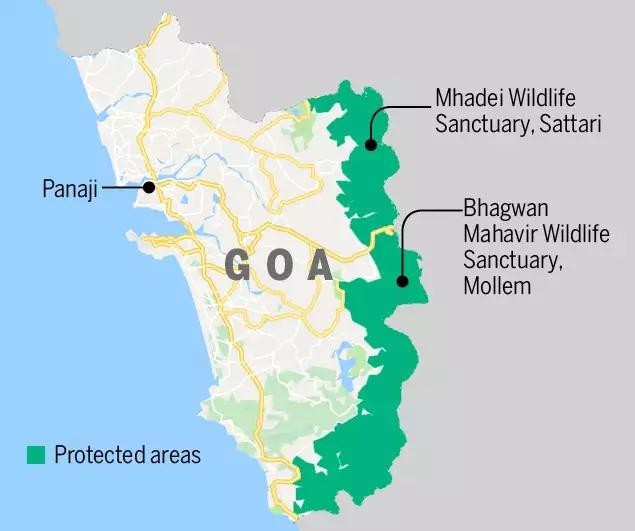
- 24 Jul 2023
Why in the News?
In a recent development, the Government of Goa has been directed by the Goa Bench of the Bombay High Court to take action within the next three months. Specifically, they are required to officially designate the 208 sq. km. Mhadei Wildlife Sanctuary (WLS) along with its adjoining areas as a tiger reserve, as per the court's decision.
Key Facts About Mhadei Wildlife Sanctuary:
Location:
- It is located in the Northern Part of Goa, Sanguem taluka, near Valpoi town.
- The sanctuary is named after the Mhadei River (also known as Mandovi River), which originates from the Sahyadri range of mountains in Karnataka (Belgaum district) and falls in the Arabian Sea at Panaji crossing Goa.
- There are a number of picturesque waterfalls, including Vazra Sakla Falls and Virdi Falls.
- It is known for its nesting grounds of critically endangered Long-billed vultures near Vazra Falls.
Flora and Fauna
- The sanctuary is abundant with lush vegetation, characterized by a dense cover of moist deciduous trees, interspersed with pockets of evergreen species.
- t is particularly well-known for its sacred groves that protect rare and indigenous trees.
- Faunas like Indian gaur, Barking deer, Sambar deer, Asian palm civet, small Indian civet, Wild boar, Indian hare etc. found here.
- The sanctuary holds immense allure for herpetologists due to its impressive diversity of snakes, encompassing all four of India's notorious venomous species - the Indian krait, Russell's viper, Saw-scaled viper, and Spectacled cobra.
Meri Maati Mera Desh campaign
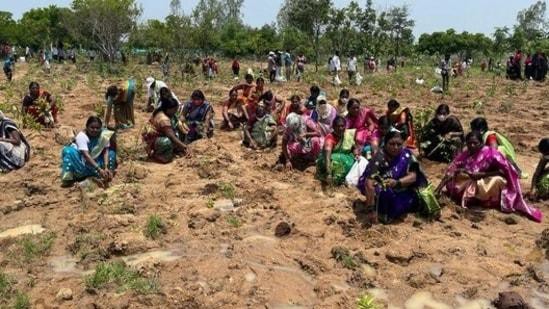
- 24 Jul 2023
Why in the News?
The 'Meri Maati Mera Desh' campaign has been recently launched by the Union government of India, as a culminating event of the 'Azadi Ka Amrit Mahotsav' celebration, commemorating 75 years of Indian Independence.
About Meri Maati Mera Desh campaign:
- Soil collected from various parts of the country during August will be utilized to create a garden along the Kartavya Path in Delhi.
- Events have been planned at different levels including panchayat, village, block, urban local bodies, and state and national levels, respectively.
- The five-point agenda includes the installation of a shilaphalakam (memorial plaque) bearing the names of those who made the supreme sacrifice, following specific specifications.
- Execution of the shilaphalakam project can be undertaken through the Mahatma Gandhi National Rural Employment Guarantee Act (MGNREGA) by leveraging local materials and resources.
- 'Vasudha Vandhan' aims at every gram panchayat or village renewing Mother Earth by planting 75 saplings of indigenous species and creating an Amrit Vatika.
- 'Veeron Ka Vandan' will honor freedom fighters and the families of deceased freedom fighters.
- Young volunteers and others will collect soil from each panchayat/village and bring it to the block, from where the 'Mitti Kalash' will be transported to Delhi.
- Urban areas will organize events at local bodies, notified area councils, Cantonment Boards, and town panchayats from August 9 to 15, and in larger municipalities and municipal corporations from August 16 to 20.
- The 'Mitti Kalash' will be ceremoniously brought to the larger municipalities/corporations and then transported to Kartavya Path.
